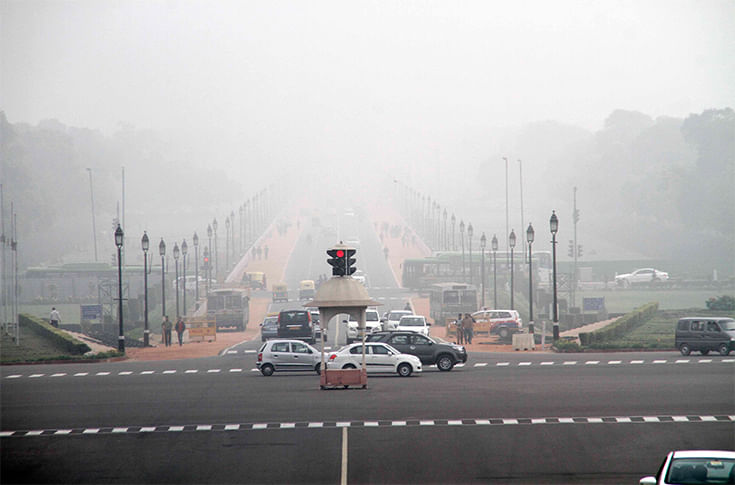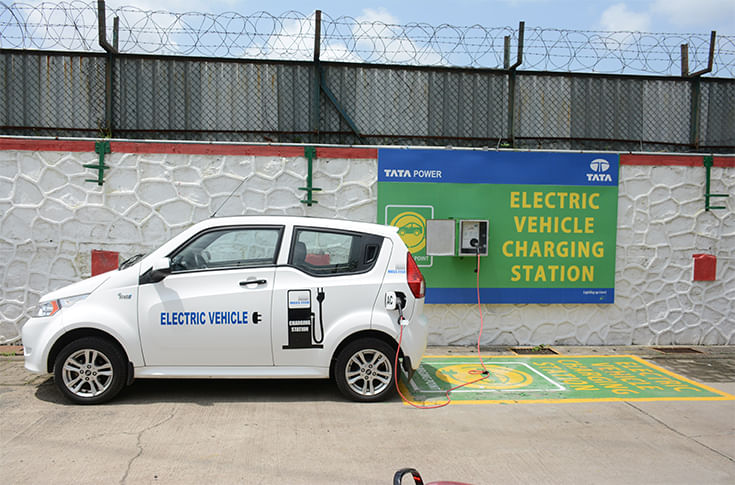Vehicular emissions: Opportunities and challenges ahead
Anup Bandivadekar, Program Director / Regional Lead, International Council on Clean Transportation on why some EV production mandate is necessary in the absence of stringent fuel efficiency regulations and the future with BS-VI
The emission clock is ticking faster. At least it does when one looks ahead to the transition to Bharat VI emission standards a mere 11 and a half months away. Cleaner, ultra-low sulphur fuels are already available in the National Capital Territory of Delhi, and will be soon across the National Capital Region, providing a walking start to the rollout of the BS VI fuels.
Perhaps, the clock seems to have sped up because of the Supreme Court order that no BS-IV vehicles can be sold after April 1, 2020. This means that OEMs cannot afford to overproduce BS-IV vehicles in hope of selling them past the April 2020 deadline. Consumers may be in for both a rude shock (as prices of commercial vehicles go up) and a pleasant surprise (as pollution falls drastically).
On the passenger vehicle side, consumers seem to be walking away from diesel cars, with market share slipping below 40 percent in the first half of 2018. This is consistent with trends in the European Union. The price gap between new diesel and petrol cars will increase after BS-VI comes into effect, so we should expect diesel market share to fall further. This should mean lower vehicular emissions overall, because BS-VI diesel cars should be considerably cleaner than their BS-IV counterparts.
On October 30, 2018 the air quality index in New Delhi touched 401, which falls in the severe category and was the highest last year.
We can even hope that on-road NOx emissions from BS-VI diesel will be close to what BS-VI standards actually require. But we should temper our expectations, if not our hopes because neither the Real-Driving Emissions (RDE) tests nor the in-use conformity requirements will go into effect until 2023, and more rigorous laboratory testing based on world harmonised test procedure (WLTP) has not even been adopted. Diesel cars have a long way to go before they can shed their image as dirty vehicles.
Suv-vival of the Greenest
While diesel trends down, SUVs are trending up. Utility vehicles and vans are now nearly a third of the passenger vehicle market, and the share is rising, consistent with global trends. At BS-IV levels, some heavier SUVs are actually subject to a more lax emission standard than lighter diesel cars — which themselves are subject to a less stringent standard than petrol cars. With BS-VI, heavier diesel vehicles will no longer get a free pass when it comes to tailpipe emission standards. From the fuel efficiency and greenhouse gas emissions perspectives, however, the heavier vehicles are subject to less stringent requirements. The rising market share of utility vehicles not only increases air pollution in the near term but also makes it more difficult to reduce greenhouse gas emissions going forward.
This is what we saw in FY2018, which was the first year of compliance for the passenger vehicle fuel efficiency standards. Average new vehicle fuel efficiency barely increased between FY2016 and FY2018. The good news is that at 121 gCO2/km, new passenger vehicle CO2 emissions are nearly 9 percent below the FY2018 standard, and only about 8 percent above the FY2023 standard of 112 gCO2/km. But average new cars in the European Union will reduce emissions closer to 95 g/km by 2021, and a further 30–40 percent reduction by 2030 expected. India’s vehicle efficiency standards will have to tighten significantly to keep pace.

At least the passenger vehicle efficiency standards are bearing some fruit. In contrast, heavy-duty vehicle efficiency standards adopted in 2017 are not being enforced, and the medium-duty vehicle efficiency standards haven’t even been notified. Admittedly, these heavy-vehicle fuel efficiency standards are based on less-than-ideal constant speed fuel-consumption tests. Ideally, India should adopt an engine-efficiency standard and a tyre rolling-resistance standard for all medium and heavy-duty vehicles, while simultaneously preparing for full-vehicle simulation-based standards for the future.
From the climate change perspective, every year vehicle efficiency fails to improve significantly it becomes more difficult to achieve long-term climate targets. In a fast-growing economy like India's, even with an all-out effort to maximise fuel efficiency gains and accelerate vehicle electrification, greenhouse gas emissions from road transport may not peak until mid-century — and then at nearly twice the present level. Without such an all-out effort, greenhouse gas emissions from road transport will be nearly four times the present level in 2050.
In the near term, lack of progress on fuel efficiency hurts each time there is a noticeable increase in international oil prices. In 2018, when such a price increase coincided with a fall in the Indian rupee against the US dollar, the pain at the pump was felt broadly and served as a reminder of risks of depending on imported petroleum.
Electrifying the vehicle fleet rapidly could serve as a hedge against all three problems — air pollution in our cities, rising greenhouse gas emissions, and dependence on imported oil — band perhaps even a solution. Electric vehicles have the inherent advantage of having zero lifetime tailpipe emissions — no PUC check required! And though India’s electricity is currently fairly carbon intensive, grid emissions will decline as more renewables come online. So EVs purchased today will have a decreasing lifecycle emissions impact over time, something not possible to achieve with other types of vehicle.
Electrifying the vehicle fleet rapidly could serve as a hedge against growing air pollution, rising greenhouse gas emissions and India's dependence on imported oil.
Nevertheless, EVs remain outside the reach of most consumers, for two main reasons. First, not enough EV models — two-wheelers, or passenger cars, or commercial vehicles — are available in the market. Second, those that are available remain expensive compared to functionally similar internal combustion engine vehicles.
Fortunately, advances in battery technology and accompanying price reductions have been more rapid than most of us anticipated even five years ago. As a result, the total cost of ownership of electric vehicles is fast approaching that of the ICE vehicles. More, many state governments have established fiscal incentives on top of the central government’s FAME incentives. The EV policy announced by the Delhi State Government just a couple of weeks ago is a case in point. It proposes a combination of pollution cess, parking surcharge, road tax, and congestion fee that will apply to diesel and petrol vehicles (with higher fees for diesels than petrol in general). Revenues will be used to subsidise purchases of electric vehicles and fund charging infrastructure.
While state governments can offer fiscal incentives, they cannot make vehicle manufacturers bring more EV models to market. Consumers will need to see viable and competing ev models across all market segments before they will consider EVs as their vehicle of choice. India’s vehicle fuel efficiency standards are nowhere near stringent enough to make most manufacturers bring any EV models to the market before 2023. As experience from California, China, and now Europe and Canada shows, some sort of EV production mandate is necessary in the absence of stringent fuel efficiency regulations. Such mandates ensure that all manufacturers are populating the EV marketplace even before the cost of EVs reaches parity with ICE vehicles.
So, whether it is BS VI emission standards, fuel efficiency standards, or vehicle electrification, those of us working on reducing the environmental impact of the road transport sector still have our work cut out for us. The clock is indeed ticking!
RELATED ARTICLES
Indian Automotive Dealerships Focus on Data-Driven Strategies to Navigate Market Challenges
Industry executives outline four key approaches including technology adoption, inventory management, geographic expansio...
Skateboard EVs and Conversion Architectures: Navigating India’s Electrified Future with Flexible Platforms
Industry experts advocate for adaptable platform strategies combining ICE conversions and skateboard designs to meet div...
Agentic AI Systems: Building Autonomous Solutions
Advanced artificial intelligence agents show capacity for adaptive responses in vehicles, aerospace, and infrastructure ...





 13 Apr 2019
13 Apr 2019
 28819 Views
28819 Views







 Angitha Suresh
Angitha Suresh




